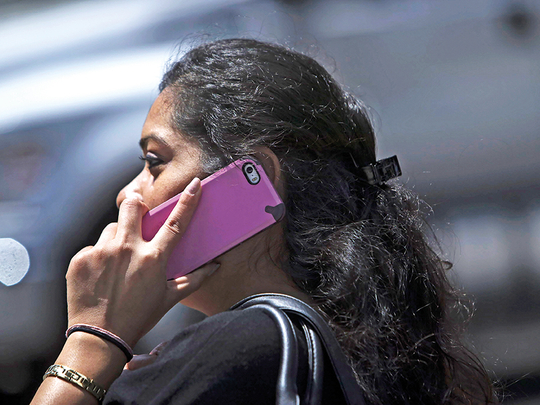
Do cell phones cause cancer?
Despite years of research, there is still no clear answer. But two government studies released Friday, one in rats and one in mice, suggest that if there is any risk, it is small, health officials said.
Safety questions about cell phones have drawn intense interest and debate for years as the devices have become integral to most people’s lives. Even a minute risk could harm millions of people.
These two studies on the effects of the type of radiation the phones emit, conducted over 10 years and costing $25 million, are considered the most extensive to date.
In male rats, the studies linked tumours in the heart to high exposure to radiation from the phones. But that problem did not occur in female rats, or any mice.
The rodents in the studies were exposed to radiation nine hours a day for two years, more than people experience even with a lot of cell phone use, so the results cannot be applied directly to humans, said John Bucher, a senior scientist at the National Toxicology Program, during a telephone news briefing.
The results, he said, had not led him to change his own cell phone use or to urge his own family to do so. But he also noted that the heart tumours in rats — called malignant schwannomas — are similar to acoustic neuromas, a benign tumour in people involving the nerve that connects the ear to the brain, which some studies have linked to cell phone use.
He said that nearly 20 animals studies on this subject have been done, “with the vast majority coming up negative with respect to cancer.”
Other agencies are studying cell phone use in people and trying to determine whether it is linked to the incidence of any type of cancer, Bucher said.
The Food and Drug Administration issued a statement saying it respected the research by the toxicology program, had reviewed many other studies on cell phone safety, and had “not found sufficient evidence that there are adverse health effects in humans caused by exposures at or under the current radio-frequency exposure limits.”
The statement, from Dr Jeffrey Shuren, director of the FDA’s centre for devices and radiological health, also said, “Even with frequent daily use by the vast majority of adults, we have not seen an increase in events like brain tumours.”
The Federal Communications Commission sets exposure limits for radio-frequency energy from cell phones, but relies on the FDA and other health agencies for scientific advice on determining the limits, the statement said.
For people who worry about the risk, health officials offer common-sense advice: Spend less time on cell phones, use a headset or speaker mode so that the phone is not pressed up against the head and avoid trying to make calls if the signal is weak. Bucher noted that the radiation emitted increases when users are in spots where the signal is poor or sporadic and the phone has to work harder to connect.
The new studies also found tumours in the brains and some other organs in the animals exposed to the radio-frequency radiation. But Bucher said those findings were “equivocal,” emphasising that only the heart tumours provided evidence strong enough for the researchers to trust. Other possible effects need more research, he said.
Others felt that even the ambiguous findings were of concern. Joel M. Moskowitz, director of the Center for Family and Community Health at the School of Public Health, at the University of California, Berkeley, said that based on the overall results of the study, the government should reassess and strengthen the limits it imposes on how much and what types of radiation cell phones can emit.
Scientists do not know why only male rats and not females develop the heart tumours, but Bucher said one possibility is simply that the males are bigger and absorb more of the radiation.
The studies also found some DNA damage in the exposed animals, a bit of a surprise because scientists had believed that radio-frequency radiation — unlike the ionising radiation in X-rays — could not harm DNA.
“We don’t feel like we understand enough about the results to be able to place a huge degree of confidence in the findings,” Bucher said.
A seemingly paradoxical finding that has also puzzled the researchers is that the rats exposed to the cell phone radiation actually lived longer than the controls. One possible explanation, Bucher said, is that the radiation may ease inflammation, and lessen the severity of a chronic kidney disorder that is common in ageing rats and can kill them.
Asked if there was any chance that cell phone use could help people live longer, Bucher said: “The extrapolation to humans requires a number of steps that go beyond the realm of what we’re studying here. I don’t think that question is particularly answerable at the moment.”
The reports issued Friday were considered draft versions released for public comment and a review by outside experts on March 26-28 at the environmental health institute in Research Triangle Park, North Carolina.












